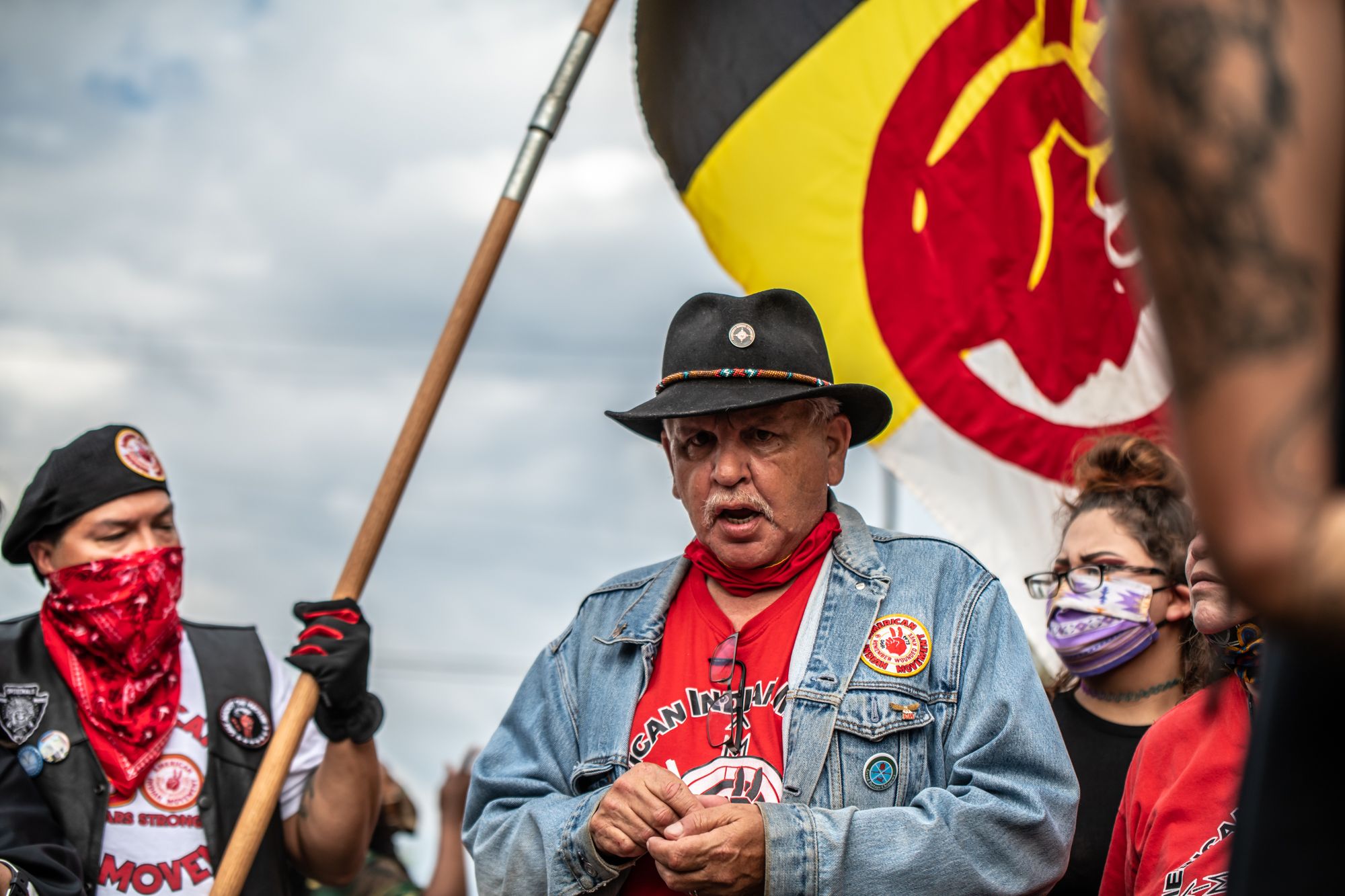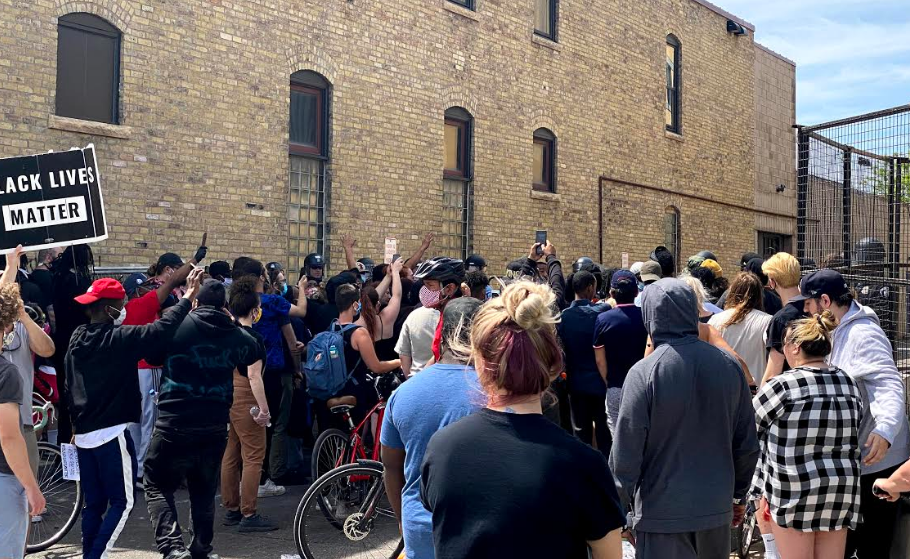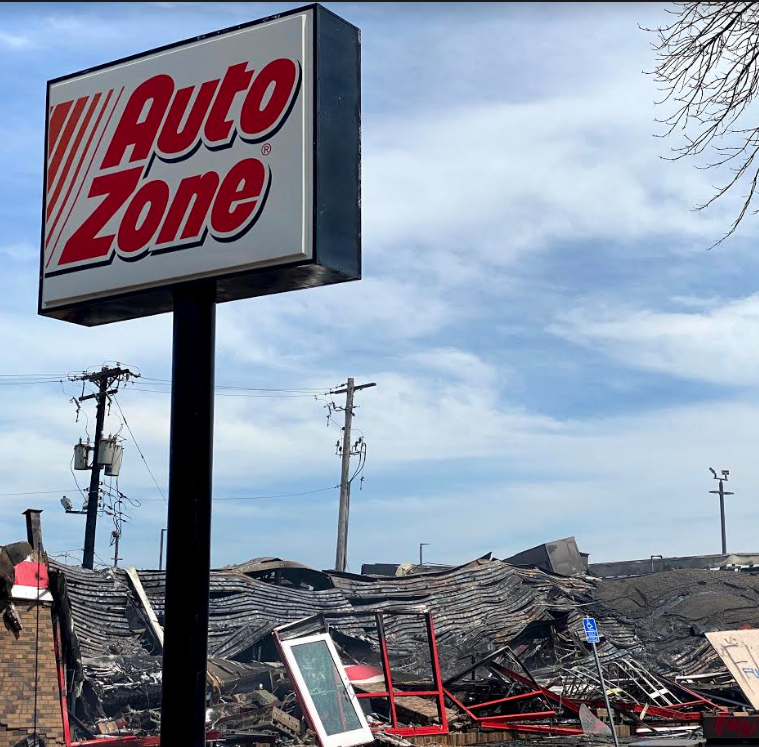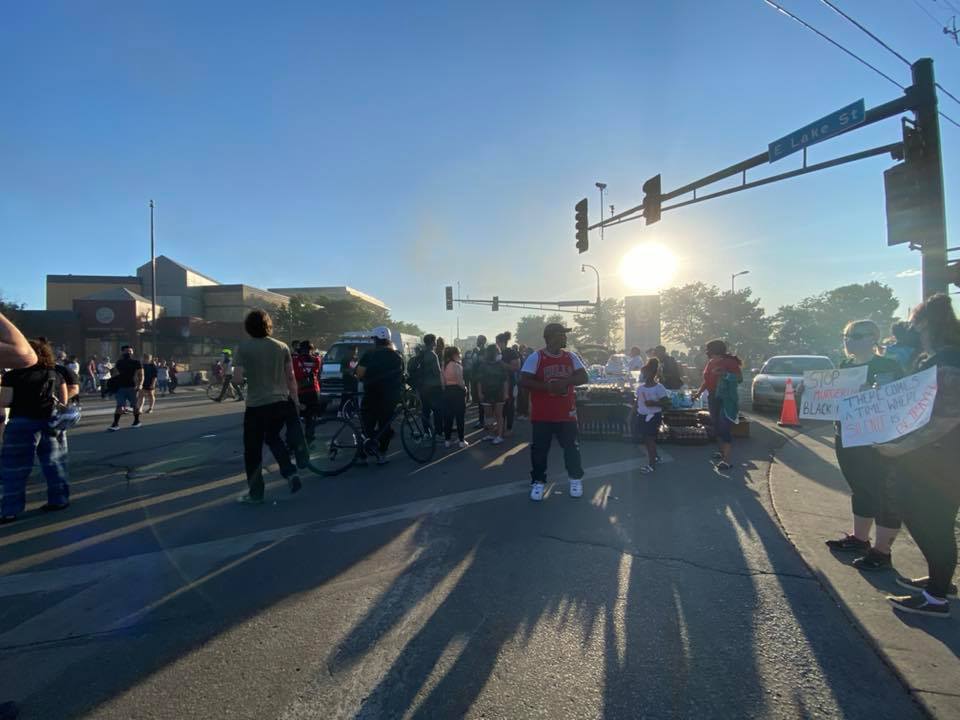
- Details
- By Darren Thompson
MINNEAPOLIS — Protests and riots extended into the third day in Minneapolis as a reaction to the unnecessary death of George Floyd, a 46-year-old African American man who died Monday as the result of excessive police force by officers of the Minneapolis Police Department (MPD). Four officers were fired on Tuesday as the result of their involvement in the deadly incident.
On Thursday, swelling crowds confronted law enforcement at big box stores such as Target, Cub Foods, and Aldi, as well as small businesses on the city’s south side Longfellow neighborhood.
 Crowds gathered in Minneapolis to show their outrage of the senseless death of George Floyd, who died of excessive police force. Native News Online photo by Darren Thompson
Crowds gathered in Minneapolis to show their outrage of the senseless death of George Floyd, who died of excessive police force. Native News Online photo by Darren Thompson
With numbers growing and emotions rising, the riots continued east to Saint Paul, where another Target store was a place of interest for the protesters. Law enforcement arranged a barricade protecting Target, but a large crowd threw bottles of water and other debris at the police in riot gear. Police responded with cannisters of pepper spray and rubber bullets to push back crowds as police vehicles were damaged.
On Thursday afternoon, American Indian leaders called for healing, peace and harmony.
"Let us start to heal. Let us move forward in peace and harmony. Let us see what we can create together,” leaders of the Metropolitan Urban Indian Directors (MUID) said in a joint statement.
"The MPD has a long history violence against indigenous people and people of color. The American Indian Movement was founded in Minneapolis in 1968 as a direct response to unchecked brutality being perpetrated by the Minneapolis Police Department upon our community members,” the leaders continued.
The MUID is a consortium of organizations that serve the American Indian community in the Twin Cities Metro area. They include All Nations Indian Church, American Indian Community and Development Corporation, American Indian Movement Interpretive Center, American Indian OIC, The Circle Newspaper, Division of Indian Work, Dream of Wild Health, Indian Health Board of Minneapolis, Indigenous Peoples Task Force, Little Earth of United Tribes (LERA), MIGIZI, the Minneapolis American Indian Center, the Minnesota Indian Women’s Resource Center Interim, the Mni Sota Fund, the Native American Community Clinic (NACC), the Native American Community Development Institute (NACDI), and the Nawayee Center School.
 Auto Zone was burned to the ground on Wednesday night. Native News Online photo by Darren Thompson
Auto Zone was burned to the ground on Wednesday night. Native News Online photo by Darren Thompson
"Great strides have been made in recent years under the leadership of Minneapolis Chief of Police Medaria ‘Rondo’ Arradondo to bolster a more positive relationship between the Minneapolis Police Department and the urban American Indian community," said MUID in a joint statement. "MUID stands ready to work with Chief Arradondo and his officers to create positive, sustainable, systemic change with the MPD. Additionally, MUID will continue to engage with the Native community, and with all stakeholders to create a collaborative and sustained efforts to combat these very serious issues now gravely impacting the Minneapolis American Indian population."
Late Thursday afternoon, Minnesota Governor Tim Walz activated the Minnesota National Guard after pressure from both mayors of Minneapolis and Saint Paul to keep the peace. The directions, numbers, locations and times of the National Guard are unknown to the public.
"We are doing all we can to ensure justice is served for the death that happened to George Floyd by the Minneapolis Police Department. He should still be here,” Minnesota Lieutenant Governor Peggy Flanagan, a tribal citizen of the White Earth Band of Ojibwe, told Native News Online.
The U.S. Attorney in Minneapolis said in a press release on Wednesday afternoon that they are continuing to investigate the death of George Floyd by law enforcement.
This is a developing story.
 Minneapolis crowd express its anger over death of George Floyd. Native News Online photo by Darren Thompson
Minneapolis crowd express its anger over death of George Floyd. Native News Online photo by Darren Thompson
More Stories Like This
Native News Weekly (August 25, 2024): D.C. BriefsUS Presidents in Their Own Words Concerning American Indians
NDAA passes House; Lumbee Fairness Act Advances
NFL, Vikings to Host Native All-American Game, Youth Flag Clinic
Senate Committee on Indian Affairs Passes 12 Bills to Strengthen Tribal Communities
Help us defend tribal sovereignty.
At Native News Online, our mission is rooted in telling the stories that strengthen sovereignty and uplift Indigenous voices — not just at year’s end, but every single day.
Because of your generosity last year, we were able to keep our reporters on the ground in tribal communities, at national gatherings and in the halls of Congress — covering the issues that matter most to Indian Country: sovereignty, culture, education, health and economic opportunity.
That support sustained us through a tough year in 2025. Now, as we look to the year ahead, we need your help right now to ensure warrior journalism remains strong — reporting that defends tribal sovereignty, amplifies Native truth, and holds power accountable.
 The stakes couldn't be higher. Your support keeps Native voices heard, Native stories told and Native sovereignty defended.
The stakes couldn't be higher. Your support keeps Native voices heard, Native stories told and Native sovereignty defended.
Stand with Warrior Journalism today.
Levi Rickert (Potawatomi), Editor & Publisher
